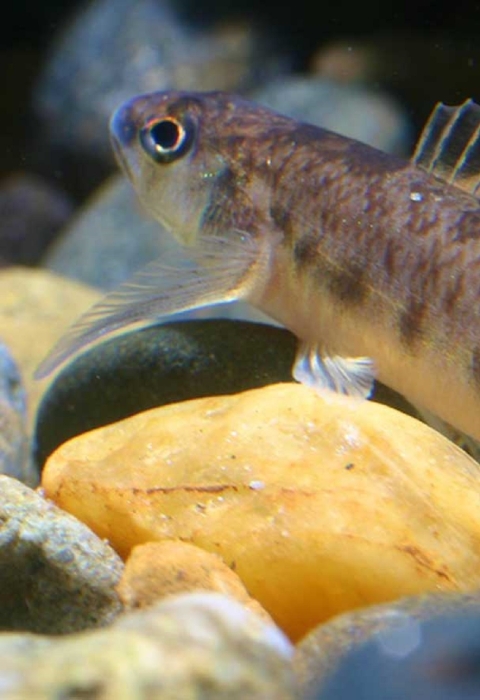What is the pearl darter?
The pearl darter (Percina aurora), like many other American darters, is a small, bottom dwelling fish that requires protection under the Endangered Species Act of 1973. The threatened pearl darter's historic range includes the Pearl River drainage and the Pascagoula drainage systems. However, it has not been recorded in the Pearl for over 40 years.
What are the main threats to the pearl darter?
The pearl darter currently faces threats due erosion, sedimentation, poor water quality and pollution. Small, scattered populations lack genetic diversity making them vulnerable to random events such as floods, droughts or pollutant spills.
Why are we designating critical habitat for the pearl darter?
Critical habitat is required for threatened and endangered species where it is both prudent and determinable. Areas selected are essential for the recovery of the species. The Service listed the pearl darter as threatened on September 20, 2017, but critical habitat was not determinable at the time. After working with the Mississippi Department of Wildlife, Fisheries, and Parks (MDWFP) and using the best science available, the service proposed 517 river miles of critical habitat in Mississippi in July 2021. In a transparent, inclusive process, the Service made the proposal available for review and comment. The final designation includes seven additional river miles in Chunky River at request of the MDWFP for a final total of 524 river miles.
Where is the critical habitat for the pearl dater?
The critical habitat for the pearl darter is composed of two units in Mississippi within Clarke, Covington, Forrest, George, Green, Lauderdale, Jackson, Jones, Newton, Perry, Simpson, Stone and Wayne counties. Both occupied and unoccupied areas were designated and essential for the conservation of the darter. Unit 1 includes 494 miles in the Pascagoula drainage system that the darter currently occupies. Critical habitat in Strong River makes up the unoccupied designation as Unit 2, a total of 30 miles, a significant step toward restoring the species to the Pearl River drainage.
What exactly is critical habitat?
Critical habitat is specific geographic areas that contain features essential to the conservation of an endangered or threatened species that may require special management and protection. Critical habitat may also include areas that are not currently occupied by the species but will be needed for its recovery. The unoccupied units are considered essential because including only occupied areas would be inadequate to ensure the conservation of the species.
Establishing critical habitat raises awareness of the needs of a species and helps to focus the efforts of our conservation partners. It also alerts federal agencies that they are required to make special conservation efforts when they work, fund or permit activities in those areas. The designation will have no impact on private landowners taking actions on their land that do not require federal funding or permits.
How is critical habitat determined?
Within areas occupied by the species, biologists consider physical or biological features needed for life processes. These include:
- Space for individual and population growth and for normal behavior.
- Cover or shelter.
- Food, water, air, light, minerals, or other nutritional or physiological requirements.
- Sites for breeding and rearing offspring.
- Habitats that are protected from disturbances or are representative of the historical geographical and ecological distributions of a species.
After considering occupied areas, biologists consider unoccupied areas that may be essential for the conservation of the species
What will be the economic impact of this designation?
A draft economic analysis prepared for the proposed critical habitat designation showed that the economic impacts would not be significant. No comments submitted on the economic analysis changed the Service's designation. For the full draft economic analysis, visit regulations.gov, Docket No. FWS-R4-ES-2020-0062.
When does the rule go into effect?
The rule goes into effect on May 8, 2023, and will be posted on regulations.gov, Docket No. FWS-R4-ES-2020-0062.



